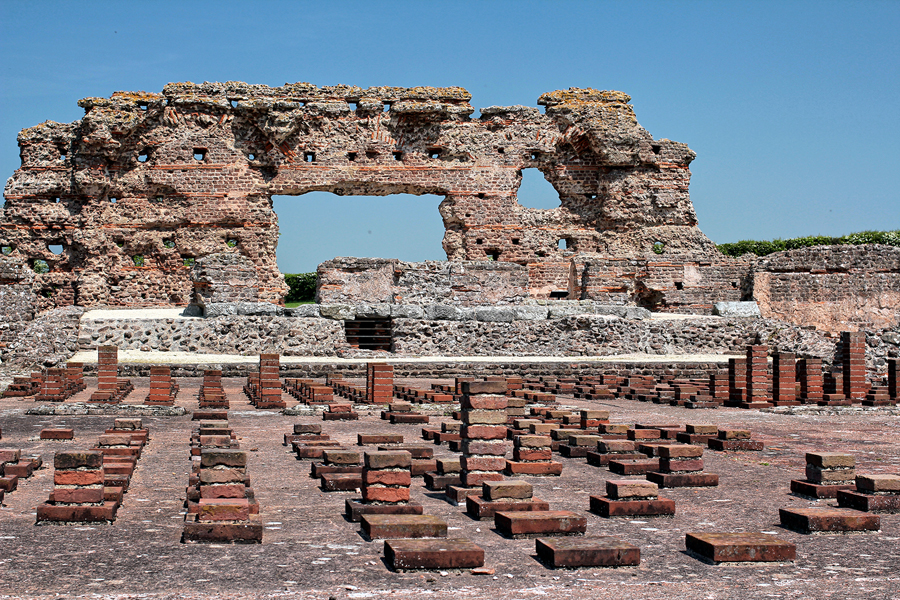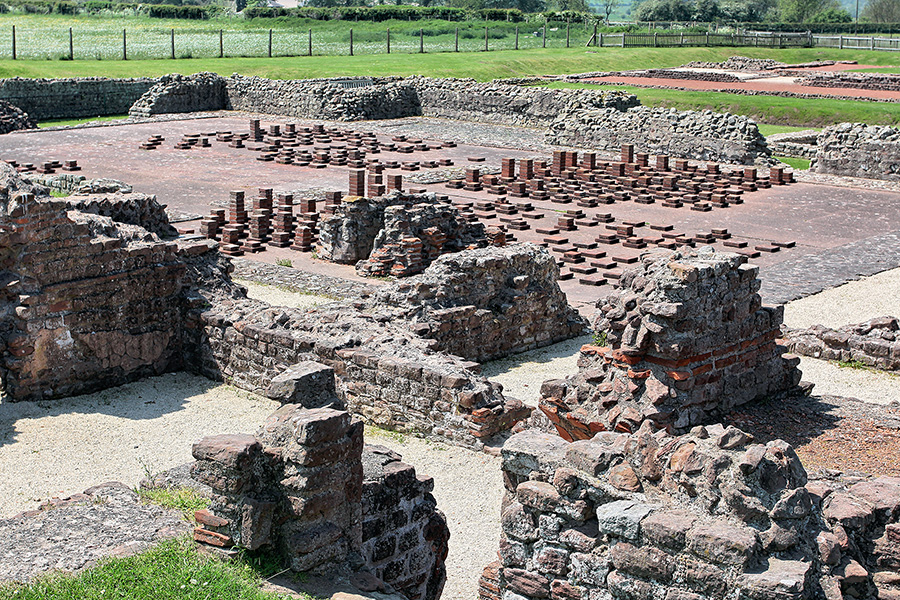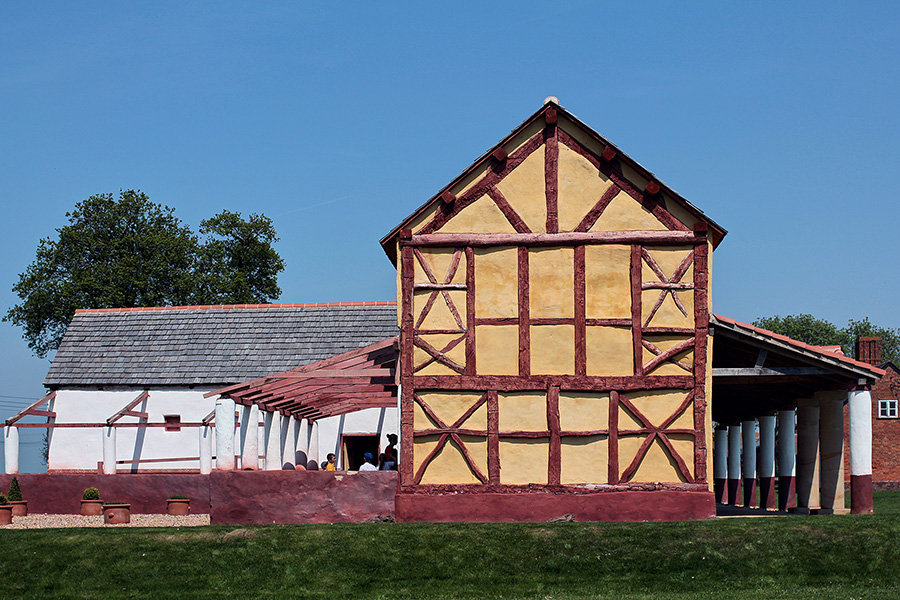 |
| The highest standing part of the ruins is the wall of the basilica |
 |
| View across the site in the opposite direction over the baths. |
 |
| Replica of a town house |
Wroxeter Roman City, just East of Shrewsbury is in the care of English Heritage. Wroxeter is a more modern Anglicization of Viroconium of the Cornovians, referring to pre-Roman tribe which had had a hill fort on the Wrekin. Its current state of preservation is probably because it lies on an isolated site which has reduced damage. There was a fortress on the site from 47 AD which was used by the 14th Legion (Legio XIV Gemina) for the invasion of Wales. The major Roman road Watling Street runs from Dover through Wroxeter. Later the fortress was used by the 20 Legion ( Legio XX Valeria Victrix) which later moved to Chester. Wroxeter became a civil settlement from 90 AD which then survived for 400 years. It was the fourth largest city in Roman Britain covering 180 acres and at its peak is believed to have had a population of about 15,000. The city had baths and a forum. In the Saxon period a small village developed at the south end of the town and an Anglo-Saxon church was built using materials quarried from the Roman ruins.
Fletcher Moss, visiting around 1900, wrote,
"Journeying on, we come to the long-buried Roman city of Uriconium, and here is another interesting place-name that has gone through strange mutations. It seems the great isolated hill, the landmark for fifty miles round, has kept (like so many other mountains and rivers) its Celtic or British name, Wrekin or Vrekin, for there was an attempt to call it Mount St. Gilbert by the Normans, and at its base was the Roman city of Uriconium or Vriconium, a name very similar to Wrekinium. Then the Anglo-Saxons added chester to the name, as they did to the names of other Roman camps and cities, and it became Wrekichester ro Wrochester spelled in various ways and gradually shortened to Wrochester or Wroxeter, as our own Mancunium became Manchester."
"The traveller or pilgrim, as he nears Uriconium, comes to an immense fragment of a perpedicular wall. This is all that remains above ground of the Roman Basilica, the town hall, public hall and law courts of the ancient city. Next to it are the remains of the baths and hot air flues which warmed them.
Moss mentions the legend that the city was sacked and burned by the Welsh with great slaughter.
Pevsner adds an interesting literary note to his article on Wroxeter. A. E. Housman (1859-1936) visited the site during early excavations and he was prompted to write a poem on the fate of Uricon, which appeared his book of verse, A Shropshire Lad, which was privately published in 1896 as he could not find a publisher to accept it, but which has been print ever since.
The reconstruction of the Roman town house was featured in a Channel 4 program, "Rome was not built in a Day" in which the construction was undertaken using traditional methods as described in the manual of Vitruvius, the Roman architect. The town house is an important adjuct to the site for both the regular visitors and school parties.
 |
| The highest standing part of the ruins is the wall of the basilica |
 |
| View across the site in the opposite direction over the baths. |
 |
| Replica of a town house |
Wikipedia site on Wroxeter and on A. E. Housman.
English Heritage Site.
Pilgrimages in Cheshire and Shropshire, by Fletcher Moss, published by the author from his home in the old Parsonage, Didsbury in 1901 and reprinted by E. J. Morten, Didsbury, 1972
The Buildings of England, Shropshire, Nikolaus Pevsner, Penguin Books, 1958